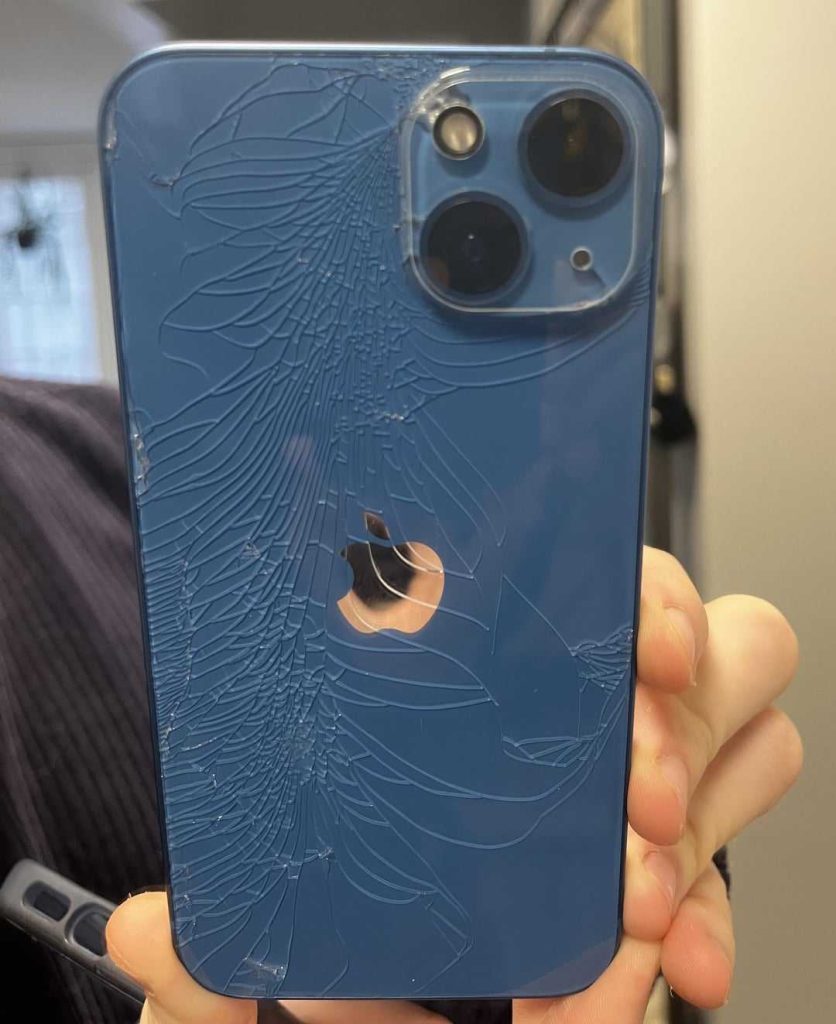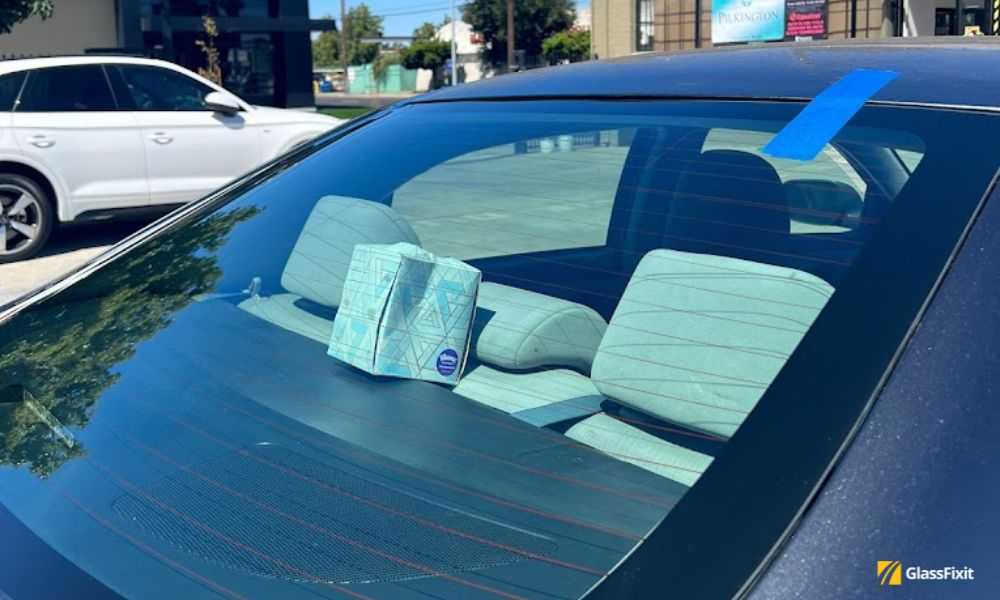A sudden loud crack and a spiderweb of fractures across your rear windshield can be startling and frustrating. Usually, rear windshields shatter unexpectedly, leaving drivers puzzled about the causes. The main reasons include impact from debris, extreme temperature fluctuations, manufacturing defects, or stress from improper installation. Understanding these causes can help prevent future incidents and keep you safe on the road.
A cracked or shattered rear windshield often results from external impacts like flying debris or rocks kicked up by other vehicles. Environmental factors such as rapid temperature changes can weaken the glass, making it more prone to breaking. Additionally, manufacturing flaws or improper installation can introduce stress points that cause the glass to fail unexpectedly. Recognizing these causes can assist vehicle owners in taking proactive measures to protect their cars and ensure safety.
The rear windshield, though built to be durable, is vulnerable to various stressors. Sudden impacts from stones or objects striking the glass are common culprits, especially on highways. Environmental conditions like rapid temperature shifts—going from hot to cold—can cause the glass to expand or contract unevenly, leading to cracks. Manufacturing issues or improper installation can create weak spots that eventually cause the glass to shatter. Being aware of these factors can help you better understand why your rear windshield might unexpectedly break and how to prevent it.
What Causes Rear Windshield to Shatter
Introduction to Rear Windshield Vulnerability
The rear windshield plays a crucial role in keeping the vehicle safe and secure. Despite its strength, it can sometimes shatter unexpectedly. Understanding what causes this damage can help drivers prevent it and stay safe on the road.
Common Causes of Rear Windshield Shattering
Impact from Road Debris and Objects
One of the most frequent causes is hitting or being hit by road debris. Stones, gravel, or other objects kicked up from the road can strike the glass with enough force to cause cracks or complete shattering. Often, this happens at high speeds, making the impact more damaging.
Extreme Temperature Fluctuations
Sudden changes in temperature can put stress on the glass. For example, pouring hot water on a cold windshield or leaving the car in intense sunlight after a cold night can cause the glass to expand or contract. This thermal stress may lead to cracking or shattering over time.
Manufacturing Defects
Sometimes, flaws during the manufacturing process weaken the glass. These imperfections, like bubbles or uneven layers, act as stress points that can break under normal conditions. A windshield with a factory defect is more prone to shattering with minor impacts or temperature changes.
Stress Fractures and Weak Spots
Stress from installation or previous damage can develop into cracks that grow silently over time. These weak spots are vulnerable to breaking with minimal force later on, especially if the glass has already been compromised.
Driving Conditions and Environmental Factors
Extreme Weather Events
Heavy hailstorms, strong winds, or falling branches during storms can cause damage. Hailstones, in particular, are shaped like balls of ice that can puncture or crack the rear windshield. Tree limbs blown by high winds can also hit and damage the glass.
Vandalism and Intentional Damage
Some damage results from deliberate acts like vandalism. People throwing objects or breaking windows intentionally can cause significant damage that makes the glass shatter unexpectedly later.
Slamming Doors and Vibrations
Repeated force from slamming doors or excessive vibrations from rough roads can create micro-cracks. These tiny cracks may grow over time, eventually causing the entire windshield to shatter under stress.
Impact of Aging and Wear on Glass Strength
Age-Related Deterioration
As vehicles age, so does their glass. Over years, tiny cracks and stress marks accumulate. These imperfections weaken the overall integrity of the windshield, making it more susceptible to shattering.
Exposure to UV Rays and Chemicals
Constant exposure to sunlight and chemicals can degrade the glass’s bonding layers, diminishing its strength. This weakening process makes the windshield more vulnerable to impacts or stress.
Role of Improper Installation and Repairs
Incorrect Installation Techniques
If the windshield is not installed correctly, stress points may develop. Improper sealing or misalignment can lead to uneven pressure distribution, which increases the risk of shattering under stress.
Poor Quality Repair Work
Repairs that are poorly done can weaken the glass further. Using cheap adhesives or improper procedures can introduce new cracks or fail to reinforce weak areas, making future breakage more likely.
Technological and Structural Factors
Use of Laminated Glass
Most rear windshields are made of laminated glass, which holds its shape even when broken. However, defects or damage to the laminate layer may cause the entire glass to shatter unexpectedly.
Structural Integrity of the Vehicle
A vehicle’s body design influences how stress is distributed across the glass. Weak structural points or previous accidents can cause uneven stress on the windshield, leading to cracks and shattering.
Preventive Measures to Protect Your Rear Windshield
While not all causes are preventable, certain steps can reduce risks. Regular inspections help identify small cracks before they grow. Avoiding extreme temperature changes and not parking under trees or near construction sites can also protect the glass.
Regular Maintenance and Checks
Inspect your rear windshield periodically for chips or cracks. Fix small damages early to prevent them from spreading. Ensure proper installation if repairs or replacements are needed.
Safe Driving Practices
Drive carefully over rough roads and avoid debris when possible. Keep a safe distance from large trucks that may kick up rocks. Be cautious during storms or extreme weather conditions.
Choosing Quality Replacement Parts
Always opt for high-quality, OEM (original equipment manufacturer) windshields during replacements. Proper professional installation ensures the structural strength and longevity of the glass.
Summary of Key Factors Leading to Shattering
- Impact from road debris or objects
- Temperature fluctuations causing thermal stress
- Manufacturing defects and weak spots
- Environmental hazards like hail or falling branches
- Vandalism or intentional damage
- Aging, UV exposure, and chemical deterioration
- Improper installation or repairs
- Vehicle structural weaknesses or previous damage
Related Topics to Explore
- How to repair a cracked rear windshield
- The differences between laminated and tempered glass
- Tips for choosing the right windshield replacement service
- Understanding the warranty and insurance coverage for windshield repairs
- How to prevent windshield damage during winter and storms
By understanding these causes and taking proactive steps, drivers can minimize the risk of their rear windshield shattering. Regular maintenance, cautious driving, and proper repairs play vital roles in keeping your vehicle’s rear glass safe and intact.
Rear windshield randomly shattered
Frequently Asked Questions
How do temperature fluctuations contribute to rear windshield shattering?
Extremes in temperature cause the glass to expand and contract rapidly, which can create stress points in the material. When temperatures drop suddenly, such as during a cold snap, the glass becomes brittle and more prone to cracking. Conversely, rapid heating from intense sunlight can weaken the glass over time, increasing the likelihood of shattering under pressure or impact.
Can manufacturing defects lead to a rear windshield breaking unexpectedly?
Yes, manufacturing flaws like weak spots, trapped air bubbles, or improper bonding can compromise the integrity of the glass. These imperfections might go unnoticed initially but can develop into cracks or cause the glass to break spontaneously over time, especially when subjected to stress or temperature changes.
What role does impact from debris or objects play in shattering the rear windshield?
Impact from stones, debris, or falling objects can deliver enough force to crack or shatter the rear windshield. Such impacts create localized stress points, which can spread quickly across the glass, leading to sudden breakage. High-speed driving on rough roads also increases the likelihood of debris hitting the rear window.
How does existing damage or minor cracks influence the risk of shattering?
Existing chips or minor cracks weaken the structural integrity of the glass. Even small damages can expand over time due to vibrations, temperature changes, or additional impacts, eventually leading to a complete shatter. It’s essential to repair minor damages promptly to prevent further problems.
Final Thoughts
Rear windshield shattering can result from various factors. Impact from debris or stones often causes cracks that lead to complete breakage. Sudden temperature changes cause stress in the glass, making it more prone to shattering. Additionally, manufacturing defects weaken the integrity of the windshield over time.
Poor installation or existing damage also increases the risk of breakage. Recognizing these causes helps drivers take preventive steps.
In conclusion, what causes rear windshield to shatter includes impacts, temperature fluctuations, defects, and improper installation. Understanding these factors helps avoid unexpected breakage and ensures safety.



